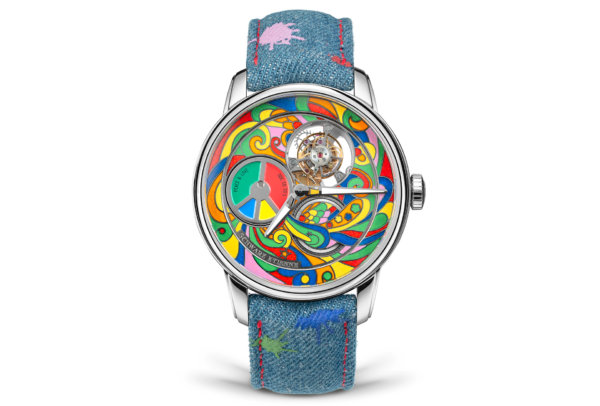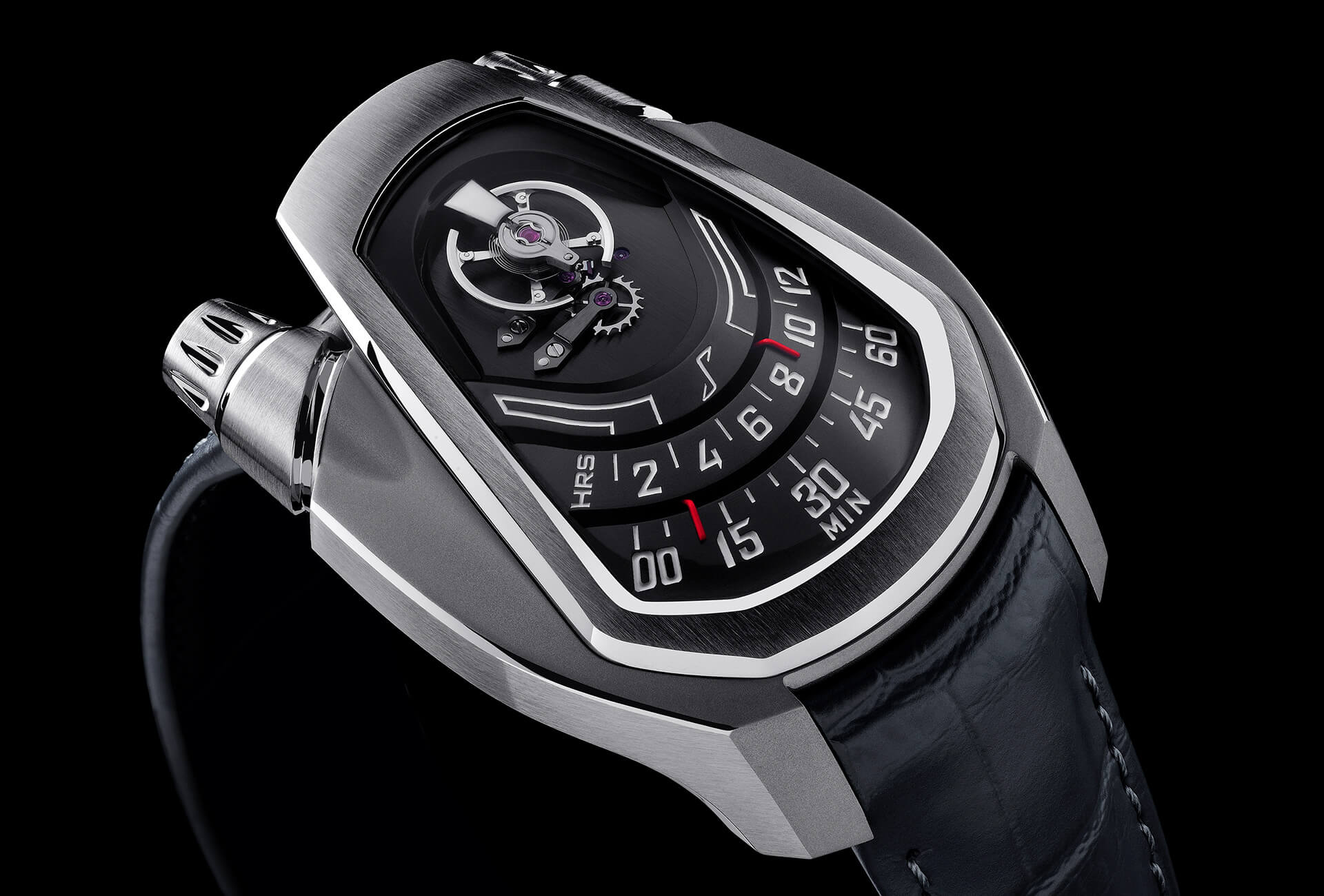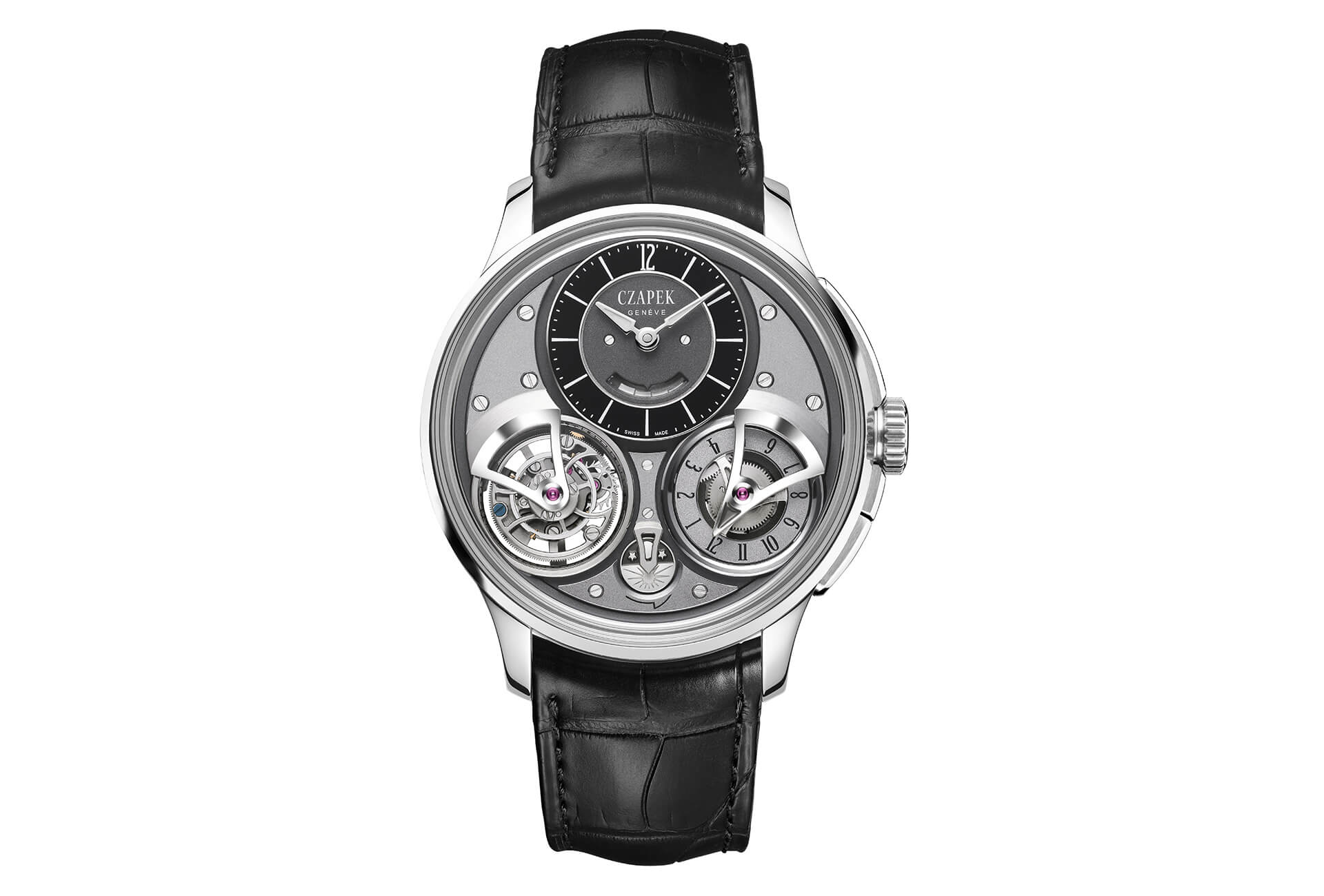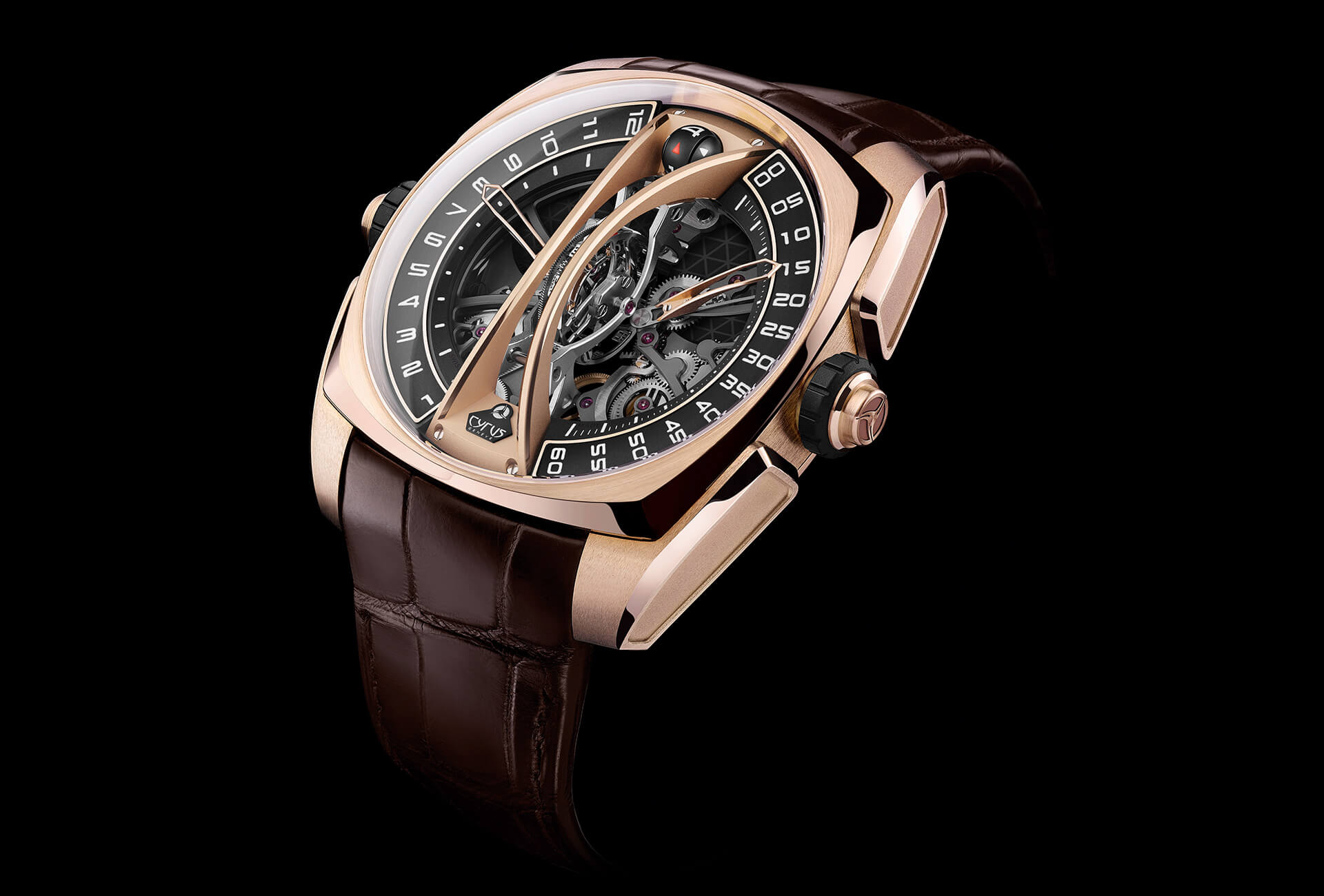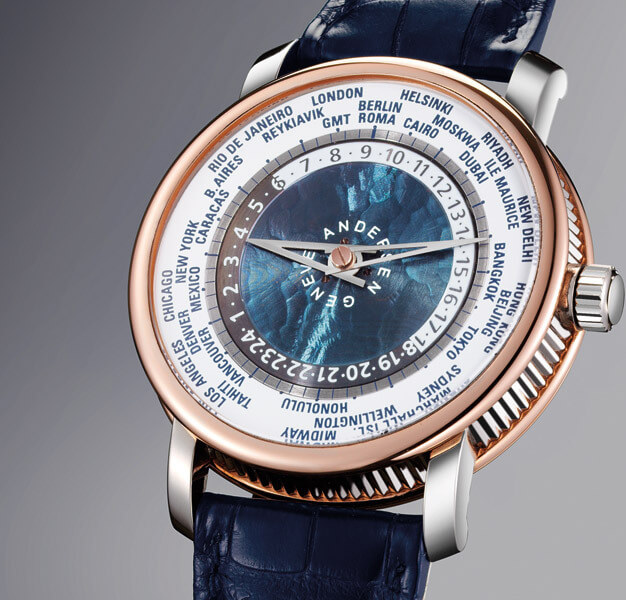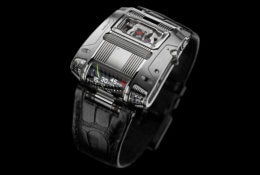Alchemists Cu 29
With Vincent Perriard behind the scenes and Philippe Dufour as a consultant, the trio of Hervé Schlüchter, Fabrice Thüler and Denis Vipret weren’t taking any chances. The Cu 29 – which was heavily touted on social media as a world-first – is made from Cuprum, a copper, gold and silver alloy which, as well as a stable appearance, has health benefits: copper (80% of the alloy) helps the body assimilate vitamin C. The watch itself is finely crafted, with natural stone dials at 12 o’clock and 6 o’clock, a function selector for winding or setting, a cursor moving along a peripheral gear bar to indicate power reserve, and a cylindrical blued balance spring. An “atmosphere” sapphire crystal having a smaller diameter at its base than around its edge literally englobes the movement – the makers had to drill a hole in the sapphire for the winding stem. Impressive.
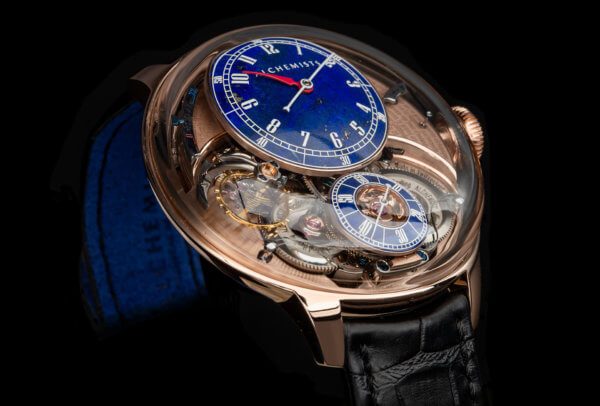
Beauregard Dahlia
“This is not a watch”, warns the press announcement and it’s right. This is the story of one man’s life, Alexandre Beauregard. Born in Quebec and now living in Montreal, this serial entrepreneur – he also owns an industrial laundry business and a property company – got into watchmaking at the age of 17, using his father’s garage as a workshop. “First off, I wanted to make watches out of historic wood, like Beethoven’s piano!” he jokes in his laidback French-Canadian drawl. After years of learning through practice, a chance encounter in Montreal with Lionel Ladoire, of the defunct Ladoire Genève brand, was the entry into the world of watchmaking that he’d been waiting for. The Dahlia’s magnificent central flying tourbillon was developed by Télôs Watch in La Chaux-de-Fonds. The gemstone petals are individually hand-cut before being assembled around the dial. Designing the three-dimensional hands, required by the 3mm height of the petals, was an additional challenge. Each Dahlia watch is unique.
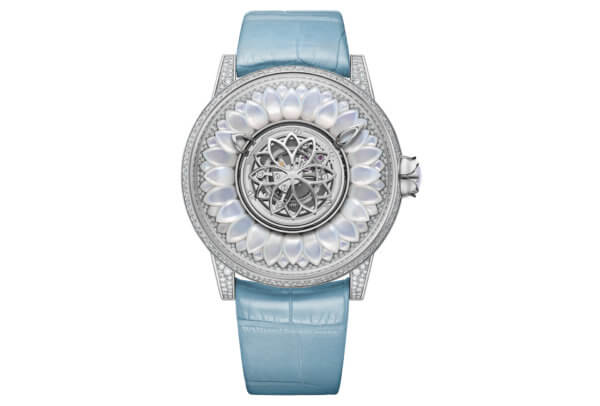
Chronométrie Ferdinand Berthoud Chronomètre FB 1L
Revived in 2015 by Chopard co-president Karl-Friedrich Scheufele, the Ferdinand Berthoud brand doesn’t strictly qualify as an independent, but its very small production volume does place it among the brands showing in Baselworld’s “Les Ateliers” hall. Joining what was, until now, its only model, the FB 1, it presents the Chronomètre FB 1L with a new “age of the moon” complication. Not to be confused with the more usual moon-phase complication which visually indicates the different stages in the lunar cycle, it counts the number of days since the last new moon. This, combined with precise time measurement, is how ships’ crews plotted longitude at sea. The original mechanism comprises a feeler arm that “reads” information from a circular cam, visible at 5 o’clock and rotating around the edge of the movement. In a continuous back-and-forth, a hand sweeps a sector at 6 o’clock to show the age of the moon. A patent has been filed for this complication which ensures astronomical precision, deviating by a single day in 577 years of operation.
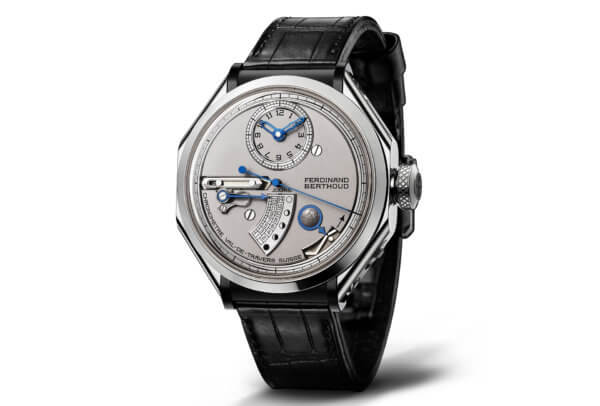
Cyrus Klepcys Vertical Tourbillon Skeleton
Located in the canton of Geneva, Cyrus belongs to the same group as the well-known movement-maker Chronode, headed by Jean-François Mojon in Le Locle, so it was only natural that it should turn to its stablemate to develop this stunning movement. Launched in 2018 as a non-skeleton version, the Klepcys is distinguished by a tourbillon set perpendicular to the plate, thus restoring its primary function: originally intended for pocket watches, Abraham-Louis Breguet’s mechanism served to compensate the effects of gravity on oscillators in a vertical position. This year’s skeletonised version affords a spectacular view of the movement, accentuated by the imposing transversal tourbillon bridge. Rising out of the movement and over the graduated flange, the 3D hands indicate retrograde minutes and jumping hours. As for the seconds, they are shown on the edge of the tourbillon carriage. Last and not least, the 100-hour power reserve is tracked on a sphere at 12 o’clock. There are three executions, in pink gold, black DLC titanium or bi-colour, each a limited edition of five.
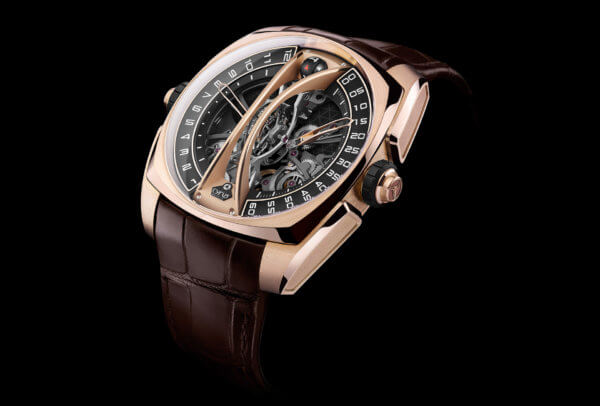
Czapek Place Vendôme Ombre
Launched in 2015 and named after François Czapek, a Czech-born Polish watchmaker and partner to Antoine Norbert de Patek from 1839 to 1845, Czapek is persistence rewarded. Its first watch, the Quai des Bergues n°33, took home the Public Prize at the 2016 Grand Prix d’Horlogerie de Genève. It was followed, a year later, by the Place Vendôme, which combines a suspended tourbillon with a GMT function. Developed by Chronode in Le Locle, it returns inside a grade 5 titanium case. The mechanical complications share the bottom part of the dial, with the suspended tourbillon at 8 o’clock, the second time zone at 4 o’clock and, between the two, a day/night indication. The remaining space is given over to hours and minutes, on a dark-coloured dial at 12 o’clock. A limited edition of 25 pieces.
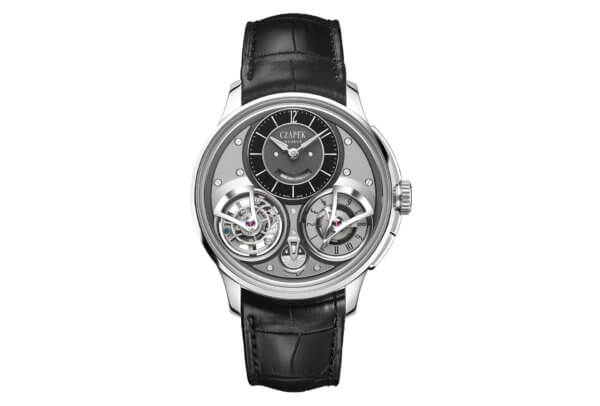
Junghans Max Bill Chronoscope 100 Jahre Bauhaus
Established in 1861 in the Black Forest, Junghans is still an unfamiliar name for most of the world. Still operating out of its original premises, where more than 3,000 people were employed in the early 1900s, it continues to produce some of its historic models, including this one which Max Bill created in 1956. A renowned architect, painter, sculptor and designer, Bill was Swiss-born but trained at the Bauhaus School in Dessau, Germany, and would introduce a strong Bauhaus influence to the brand. This Chronoscope is a tribute to the movement, founded 100 years ago. Immediately legible and stripped of extraneous detail, in keeping with the school’s precepts, this is the first time it has been made in white gold. Limited to 99 pieces, it is powered by a Valjoux 7750 movement.
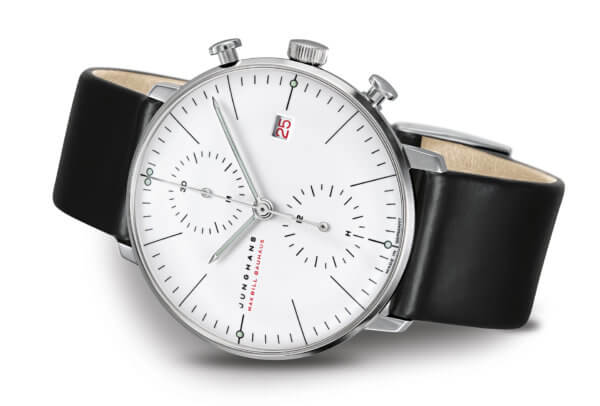
KF Spirograph
Formerly with Heritage Watch Manufactory and Leroy, after four decades working behind the scenes for brands, in 2016 German watchmaker Karsten Frässdorf decided the time had come to set up on his own, in his adopted home of La Chaux-de-Fonds. His is one of the few brands that invites the customer to personalise their watch from A to Z, from case material to complications. Hence the Spirograph isn’t a serial-produced watch but rather, says Frässdorf, “a means of putting a face on the brand”. Proving the extent of his knowledge, he has developed a thermo-compensation balance. It measures 16mm in diameter and has no rim. The balance-wheel plate reacts to an increase in temperature by dilating. In doing so, force is redirected to two arms crossing through its centre. These arms pivot around a bar that is unaffected by heat. Their movement towards or away from the centre of the balance compensates balance-spring inertia. Entirely mechanical, the system will absorb shocks up to 5,000G and comes with a five-year warranty.
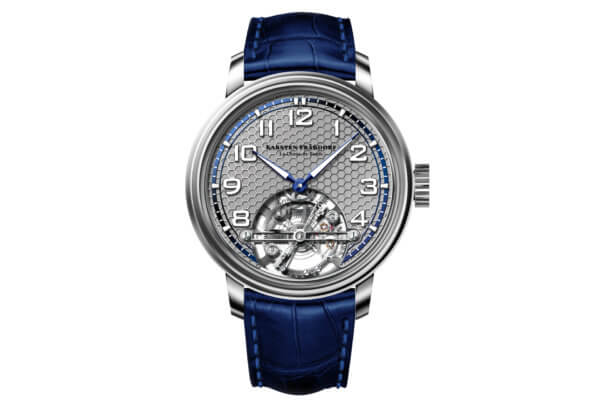
Mauron Musy Armure MU03
It may not look like much but Mauron Musy, a small brand in what is charmingly known as Switzerland’s Three Lakes region, could well have produced one of the biggest advances watchmaking has seen in the past fifty years. Eric Mauron and Christophe Musy, two precision engineers, have developed a water-resistance system that does away with gaskets. Using the mechanical principle of a clamp brace as its starting-point, their patented nO-Ring technology – comprising 36 parts as opposed to a dozen for a conventional system – hermetically seals the case to a depth of 300 metres… and eliminates the need for expensive servicing due to ageing gaskets. The cherry on the cake, the crown can be operated underwater, an option few watches offer. The movement inside the Armure MU03 is an exclusive La Joux-Perret calibre with hours, minutes, small seconds and date. Next step: dive watches.
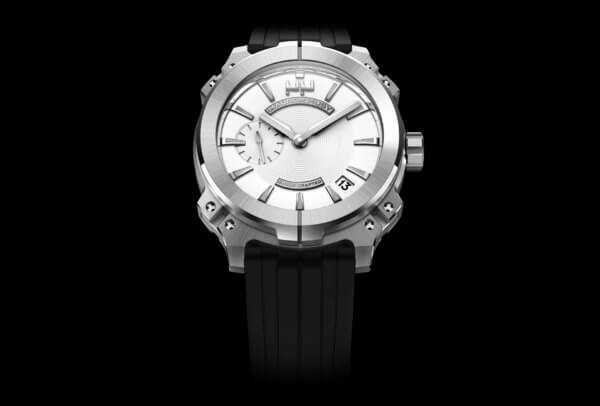
Phenomen Axiom
When Alexandre Meyer, a design engineer at the PSA automotive group for eight years, teamed up with Sylvain Nourisson, a watchmaker who earned his stripes at Christophe Claret and La Joux-Perret, the outcome was bound to be impressive. Inspired by MB&F and Urwerk, the Axiom is the first watch by Phenomen, the brand they set up in 2014 in Besançon, France. The movement, which was developed from start to finish in-house, is exceptionally complex, meaning it must be fitted in the case in two stages, from above and below. “It’s been a real four-handed job,” explains Alexandre Meyer. “Neither completely technical nor entirely stylistic.” Indications of jumping hours and retrograde minutes are shown on a stepped “amphitheatre” display. As for dimensions, let’s just say it’s the first concept-watch that Asian customers can reasonably wear. The watch has been in serial production for a couple of months and the brand aims to produce 120 a year.
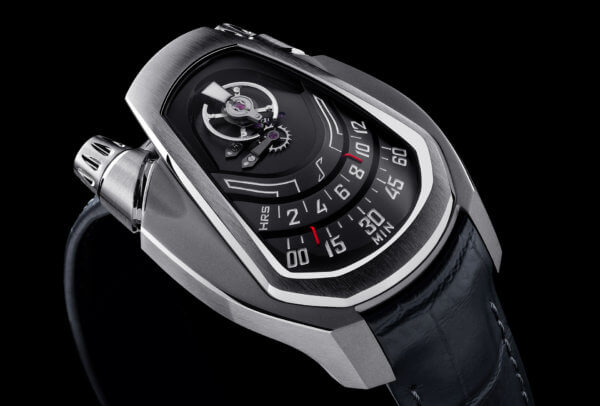
Schwarz Etienne Ode To The Seventies
Sometimes, it’s about being in the right place at the right time. Raffaello Radicchi came to Switzerland in the 1970s. In 1979 he bought a building to renovate in La Chaux-de-Fonds. This was, almost literally, the first brick in an incredible success story, thanks to which this self-made man became the biggest private property owner in the canton of Neuchâtel. In the early 2000s he acquired an old building on the main avenue through the town that had once been home to the Schwarz Etienne brand, also mentioned in the deed of sale. Which is how the brand that was originally founded in 1902 by Paul Arthur Schwarz and Olga Etienne rose from its ashes in 2008. Beneath its psychedelic exterior, this Ode To The Seventies is a magnificent example of Grand Feu enamel. The patterns on the dial are formed using the cloisonné technique and require 160 firings. The micro-rotor, at 9 o’clock on the dial side, borrows the famous Peace symbol while the flying tourbillon at 1 o’clock reminds us that Schwarz Etienne makes its components in-house courtesy of sister company E20 Innovations – and that includes balance springs. Very few brands this size can make that claim. The Ode To The Seventies watch is a 23-piece limited edition.
